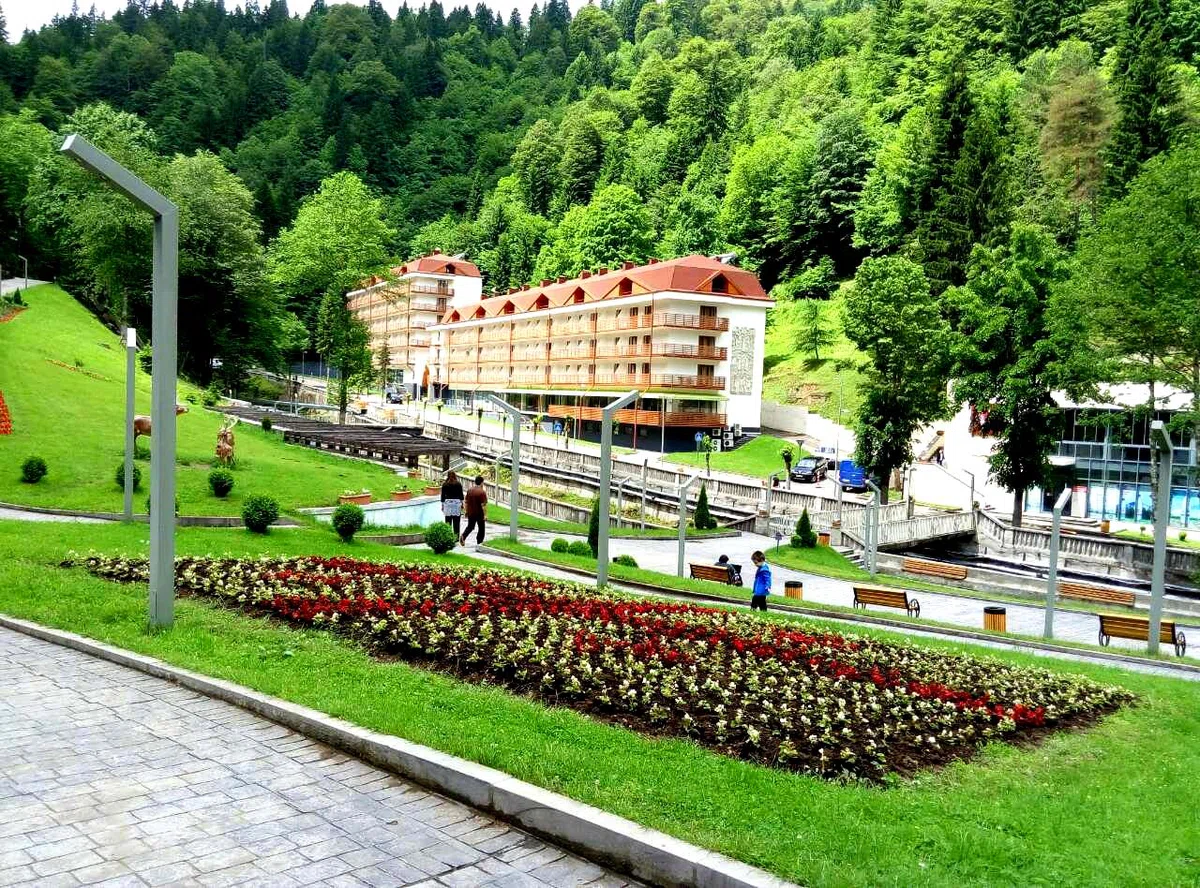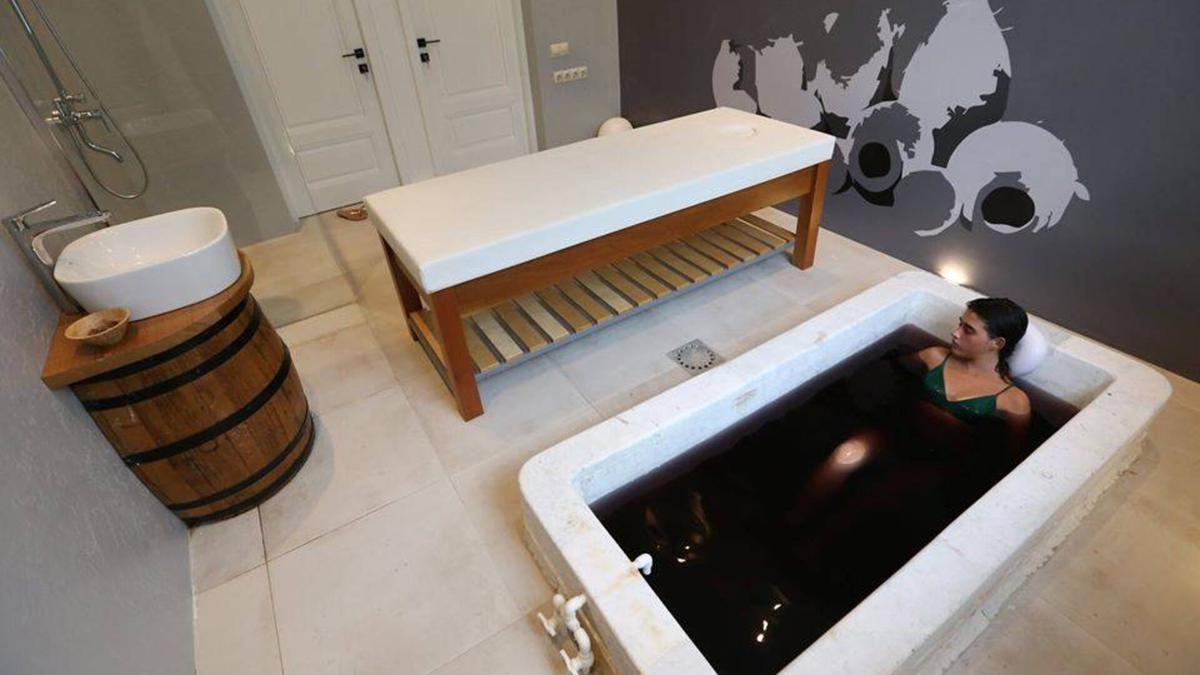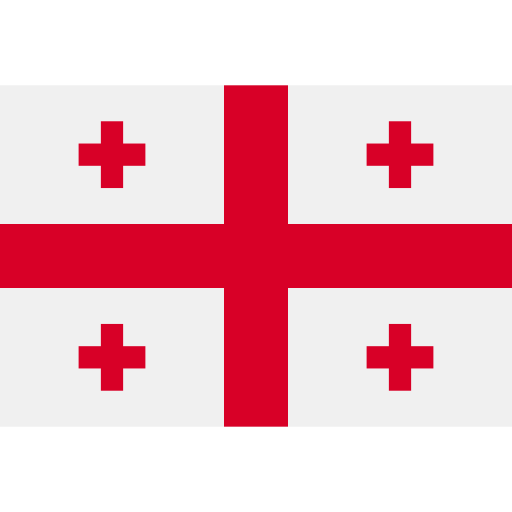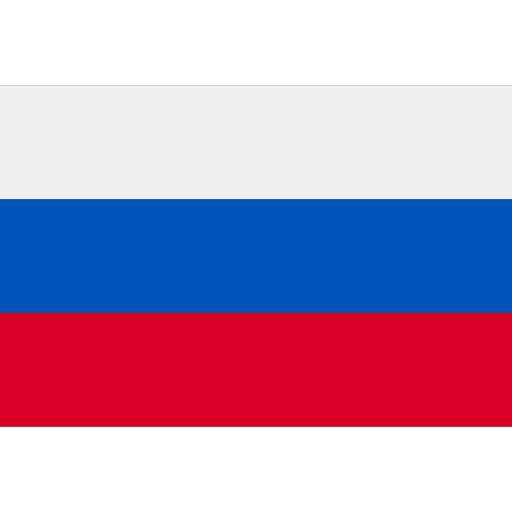
The best resorts in Tbilisi. Tbilisi Balneological Resort. Georgia.
Tbilisi baths have always been famous for their wonderful properties and sulfur waters. The thermal waters of the Tbilisi Balneological Resort have been confirmed by many observations and experiments. At the moment, there are about 35 mineral water wells on the territory of the resort! If you want to improve your health, then visit this resort.
In the center of old Tbilisi, on the border of Abanotubani and Ortachal, hot sulfur waters flow to the surface of the earth. It is with these sources that the history of the foundation of Tbilisi is connected.
According to one of the legends, several centuries ago, when the capital of Georgia was the city of Mtskheta, and the territory of the Tbilisi basin was covered with impenetrable forests, King Vakhtang Gorgasali accidentally discovered a hot spring in which his peregrine falcon and its prey, pheasant, were cooked while hunting in these forests.
The tsar liked these amazing springs so much that he ordered a city to be built on this territory, which was named after the hot waters of "Tpilisi" ("tpili" - in Georgian. "warm"; since 1936 - "Tbilisi"). In a short time, sulfur baths were built on the territory where the springs flow out, which are still operating at the present time, and the nearby territory was named Abanotubani (bath district).
TBILISI BALNEOLOGICAL RESORT
Tbilisi baths were famous throughout the Middle East. The 10th-century Arab geographer Ibn Haukal wrote about the miraculous properties of sulfur waters "... there are baths in which water boils without fire...".
The cruel conqueror Agha Mohammed Khan hoped to get rid of his incurable disease in the Tbilisi baths. But his hopes were not fulfilled, and in despair, the Scopian ordered the city to be razed to the ground. Baths built on natural hot water sources are mentioned by almost all foreign travelers who visited Tbilisi and famous people of the XVII-XIX centuries. Among them: French travelers Jean Chardin and Dubois de Montpellier, botanist Joseph Tournefort, Italian missionary Delaporte, Russian poet Pushkin and others.
The first fundamental study of the thermal waters of the capital of Georgia was carried out in the second half of the XIX century by German geologist, famous researcher of the Caucasus Wilhelm Abich. It was he who left a geological description of these places and suggested that the Tbilisi mineral waters could be used for medicinal purposes.
Later, the high efficiency of Tbilisi thermal waters was confirmed by clinical and experimental observations, which revealed the feasibility of creating a balneological resort in Tbilisi. Currently, about 35 mineral water wells are known, the total daily flow rate of which is 1,300 liters. The opening of the resort was preceded by an interesting fact: one of the founders of the resort, Mikhail Zandukeli, intended to build a resort area around sulfur springs, on the territory adjacent to Ortachala, which would include the Tbilisi Botanical Garden. The famous artist Sidamon Eristavi, at the request of Zandukeli, even developed a project for this resort area. But, unfortunately, the implementation of the project was prevented by the Second World War.
Today, the territory of the resort accommodates 400 hectares of area. From the north-eastern and eastern sides, the Kura River flows through the resort area and there is a Garden of 300 Aragvinets. The Tbilisi Botanical Garden is located on the western and south-western sides. And on the south side - the Tabori upland and Krtsanisi. Tbilisi Balneological Resort is a modern well-equipped medical, diagnostic and rehabilitation institution with valuable natural factors - therapeutic mineral and sulfur waters, as well as therapeutic mud (Kumisi mud is used). Here, with the help of modern diagnostic devices, together with medicines and natural factors, under the supervision of qualified specialists, you can undergo a medical and rehabilitation course. There is also a scientific and practical center of balneology, physiotherapy, rehabilitation and medical tourism.
Location: south-eastern part of Tbilisi. It is part of the group of resorts in Tbilisi.
Altitude above sea level: 420 m.
Terrain: mountainous and hilly.
Climate: mild, continental, moderately dry. Winter is mild, with little snow. The average temperature in January is -1 °C. Summer is hot and dry. The average temperature in August is 24°C.
Average annual precipitation: 554mm.
Relative humidity: 66%.
Duration of sunshine per year: 2112 hours.
Natural healing factors: low mountain climate, low mineralized, thermal (37-47°C) sulfide, chloride-bicarbonate and carbonate-chloride, sodium mineral waters with a total mineralization of 0.3-0.4 g/dm3, with a hydrogen sulfide content of 10-20 g/dm3.
Flow rate: 2000 000 l/day. The therapeutic muds of Akhtala and Kumisi are widely used at this resort.
Types of treatment: mineral water baths, dousing, hydrotherapy; mud baths, opplications, tampons and passive climatotherapy.
Therapeutic indicators: chronic joint diseases (rheumatic, infectious, traumatic, endocrinological), cardiovascular diseases, peripheral diseases of the nervous system, chronic gynecological diseases, inflammation of muscles and cartilage of various origins.

Tbilisi bathhouses are one of the most famous and popular places in Georgia, where people gather not only for recreation and entertainment, but also for treatment. They attract tourists from all over the world with their miraculous properties. The effectiveness of the resort's thermal waters has been confirmed by many observations and experiments, and there are about 35 wells of mineral water with a total daily flow of 1,300 liters. Interestingly, one of the founders of the resort, Mihail Zandukeli, had plans to create a spa zone around the sulfur springs in the territory adjacent to Ortachala, including a botanical garden. But his project was not realized because of World War II. The modern balneological resort is a huge area covering 400 hectares. Located on the banks of the Kura River, the resort is surrounded by green areas, mountains and hills. On the northeastern and eastern sides is the Garden of 300 Aragvi, and on the western and southwestern sides is a botanical garden. The resort area is bounded on the south side by the Tabori uplands and Krtsanisi.
Since ancient times, the spring attracted many people wishing to restore their health. Therefore bathhouses started to be built around it and the city of Tbilisi, which means "warm", was founded. One of the main advantages of the baths is their unique architecture that combines elements of different styles. The bathhouses look very beautiful and are located in the center of the city. In addition, the bathhouses are not only a place to heal the body, but also the spirit. Here you can relax from the bustle of the city, spend time with friends or family and enjoy the procedures. Thermal springs, on which the baths are based, have many therapeutic properties. They contain a large number of minerals and trace elements that are beneficial to the human body. In particular, sulfuric water, which is one of the main components and helps in combating skin diseases, strengthens the immune system and reduces stress. In addition, the baths offer various treatments such as massages, scrubs, wraps and others. They help eliminate fatigue and tension, improve blood circulation and metabolism, and restore tone and energy.
A bathhouse is not only a place for bathing, but also for socialization. Traditionally, Georgian bathhouses were places where men gathered to discuss business and spend time together. Today in the bathhouses you can find not only men, but also women and children who come to enjoy the therapeutic properties of mineral waters and to relax. Each bathhouse has its own unique architecture and interior. Some of them are preserved from ancient times, while others were built in a new style. But in any case, they are all distinguished by their cozy atmosphere and traditional decor. In the bathhouses you can taste authentic Georgian cuisine, such as khachapuri and khinkali, as well as try Georgian wines and chacha. They also host various cultural events such as exhibitions and concerts, making them even more attractive to tourists. In addition, the bathhouses were also a place where celebrities came together. One of their regular guests was the great Russian poet Alexander Pushkin, who visited Tbilisi in 1829 and described his visit in a letter to his wife: "Today I visited the baths, where all the peoples of the Caucasus have fun and bathe. There I met several Caucasian princes and even exchanged a few words with the Georgian king."
Today, the Tbilisi spa continues to attract tourists from all over the world. Baths of different categories and levels of comfort, from cheap to luxurious, provide an opportunity to experience the healing properties of mineral waters and enjoy the unique atmosphere of old Tbilisi. You can also try national Georgian dishes, enjoy local music and dance in the bathhouses. Next to them is Sulfat Park, where there are drinking galleries with mineral water. In addition, there are various masseurs and therapists offering their services to care for the body and cure many diseases on the territory of the baths.
The Tbilisi bathhouses, with their miraculous properties and sulfurous waters, have always been attractive. But, as it turned out, the thermal waters have not only unique healing properties, but also high efficiency, confirmed by clinical and experimental observations. As a result, it was decided to create a balneological resort in Tbilisi. There is a modern therapeutic, diagnostic and rehabilitation facility with valuable natural factors such as the therapeutic mineral and sulfuric waters and Kumisi mud. Patients can undergo a therapeutic and rehabilitation course with the help of modern diagnostic equipment in combination with medicines and natural factors, under the supervision of qualified specialists. In addition, there is a scientific and practical center of balneology, physiotherapy, rehabilitation and therapeutic tourism on the territory of the resort. Here researches are conducted and innovative methods of treatment and rehabilitation are developed. Thus, the balneological resort is not only a place for rest and recreation, but also a center of scientific research and development of the medical industry.
The resort is located in the southeastern part of Tbilisi at an altitude of 420 meters above sea level. It is part of a group of resorts and has a mountain-hilly terrain. The climate here is mild, continental, moderately dry. In winter the temperature rarely falls below -1 ° C, and in summer can reach 24 ° C. The average annual precipitation is 554 mm and the relative humidity is 66%. The duration of sunshine here per year is 2112 hours.
The natural healing factors include the climate of the low mountains and the curative mineral waters. The resort uses low-mineralised, thermal (37-47°C) sulphide, chloride-hydrocarbonate and carbonate-chloride, sodium mineral waters with a total mineralisation of 0.3-0.4 g/dm³ and hydrogen sulphide content of 10-20 g/dm³. The water flow rate is 2,000,000 liters per day. In addition, the therapeutic muds of Akhtala and Kumisi are widely used in the resort.
The Tbilisi Balneological Spa specializes in the treatment of chronic joint diseases (rheumatic, infectious, traumatic, endocrinological), cardiovascular diseases, peripheral nervous system diseases, chronic gynecological diseases, as well as various types of inflammation of muscles and cartilages. The treatment uses mineral water baths, dousing, hydrotherapy, mud baths, opplications, tampons and passive climatotherapy. There is also a scientific and practical center of balneology, physiotherapy, rehabilitation and medical tourism. This center employs highly qualified specialists who diagnose and treat patients with various diseases.
The therapeutic muds of Akhtala and Kumishi used in the resort have a unique composition, which allows effective treatment of many diseases of the musculoskeletal system. The muds contain a large number of minerals and trace elements, which have a beneficial effect on the skin and muscles, improve blood circulation, metabolism and the immune system. Besides disease treatment, the resort also offers preventive programs for maintaining health and improving immunity. As part of these programs, patients are offered special procedures that help strengthen the body and prevent the development of various diseases.
Here you can receive highly qualified medical care and restore your health in a pleasant and relaxing environment. Feel free to leave comments under the article and ask questions - we will be happy to answer them and help you learn more about the resort and the services it offers. We hope that our article was useful for you and will help you choose the ideal place for rest and treatment.












15 comments
Log in to leave a comment
И даже у этого места есть легенда. Только печальная к сожалению.